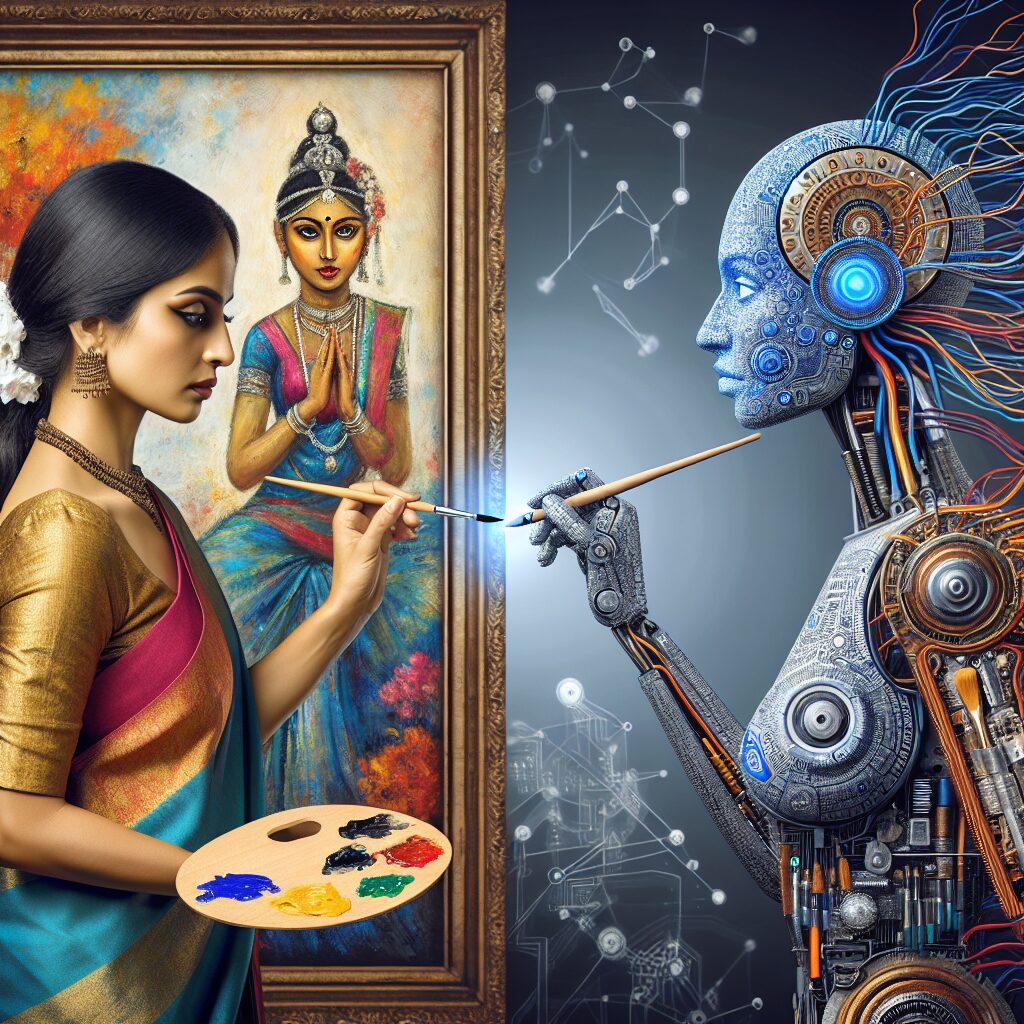Artificial Intelligence (AI) is revolutionizing nearly every industry, and the world of art is no exception. From algorithm-generated paintings to AI-assisted design tools, creatives today are navigating an evolving digital landscape. But with innovation comes controversy. While some artists embrace these technologies as tools for empowerment and inspiration, others view them as threats to originality, creativity, and even livelihoods. In this post, we’ll explore the multifaceted role AI plays in the art world and consider whether it helps or hinders the creative process.

How AI is Helping Artists
Accelerating Workflow and Productivity
AI-powered tools like Adobe Sensei, Runway ML, and DALL-E allow artists to automate time-consuming tasks such as background removal, color correction, and content generation. These tools can significantly speed up workflows, giving artists more time to focus on their vision and creativity. For digital artists, this means completing projects faster and taking on more work without compromising quality.
Generating Inspiration and New Ideas
Sometimes, the hardest part of creating is starting. AI can generate sketches, concepts, and even finished pieces that serve as springboards for original works. Tools like Midjourney and Deep Dream help artists explore unfamiliar styles or themes they might not have considered on their own. It can be like having a collaborative partner with unlimited imagination.
Making Art More Accessible
AI democratizes art by making it easier for beginners and people with disabilities to create. With user-friendly interfaces and automation, people who may not have traditional artistic training can still produce high-quality work. Text-to-image tools allow users to describe a scene and see it come to life, reducing the barrier to entry in creative expression.
Enhancing Visual Learning and Education
Educators and therapists are leveraging AI to create personalized visual learning aids. AI can generate custom flashcards, interactive art lessons, and adaptive educational content for learners with autism or developmental delays. These tools provide creative ways to teach concepts and foster communication through visuals.
The Downsides: How AI Might Be Hindering Artists
Originality and Artistic Integrity
One of the biggest criticisms of AI-generated art is its lack of originality. AI models are trained on vast datasets of existing artworks, which can lead to derivative results that mimic rather than innovate. This raises ethical questions: Can something created by an algorithm be truly called “art”? And who owns it—the machine, the programmer, or the user?
Job Displacement and Devaluation
As AI tools become more capable, there’s concern that human artists will be replaced or undervalued. Companies seeking quick and inexpensive solutions might opt for AI-generated logos, illustrations, or videos rather than hiring professionals. This could shrink opportunities for freelance artists, illustrators, and designers.
Intellectual Property and Ethical Dilemmas
Many AI models are trained using publicly available art without artists’ consent. This has led to backlash and legal challenges from creators who feel their work is being exploited. The lack of clear regulation around AI training data and generated content makes it difficult to protect intellectual property and artistic rights.
Dependency on Technology
Relying too heavily on AI tools may lead to creative stagnation. Artists might become dependent on algorithms for ideas, techniques, or finishing touches, potentially stunting their growth and limiting experimentation. While technology can enhance creativity, overuse may diminish the development of core artistic skills.
Striking a Balance: The Human-AI Collaboration
The future likely lies in collaboration rather than competition. When used thoughtfully, AI can be a powerful assistant—enhancing the artist’s capabilities without replacing the human touch. Many artists are now blending traditional techniques with digital tools to create hybrid works that honor both innovation and craftsmanship.
AI is also opening new genres of artistic expression, such as generative art, interactive installations, and machine-learning music. These mediums offer exciting possibilities for artists willing to experiment and adapt.
Conclusion
Artificial Intelligence is neither a savior nor a saboteur of the art world—it’s a tool. Like any medium, its impact depends on how it’s used. For some, it’s an incredible asset that opens new doors to creativity, learning, and accessibility. For others, it presents real challenges in originality, ethics, and professional sustainability.
As AI continues to evolve, the art community will need to engage in thoughtful dialogue about its role, responsibilities, and regulations. Artists who embrace AI while staying grounded in their creative identity may find themselves at the forefront of a new artistic renaissance.
Tagged: #AIinArt #DigitalArt #CreativityTools #ArtEthics #VisualLearning #TechnologyInArt
Leave a Reply